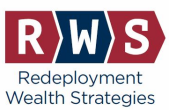Your friend goes to Las Vegas, and when he returns he can’t wait to tell you the story of how he won $5,000. This catches your attention. Winning $5,000 is a better result than most people get in Las Vegas. You expected him to come back with empty pockets, but good stories. Perhaps he knows some things about gambling you should learn. Naturally, you ask him how he did it.
“Easy,” he says, “I found a guy who was willing to bet on a coin flip. We made the bet, flipped the coin, I won, and he paid me $5,000.”
Your friend’s story is still interesting, but less than it was before you knew it was a coin flip. There’s no skill involved on a coin flip. No magic. You either get lucky or you don’t. Your friend doesn’t seem to have any real gambling skills, he was just fortunate. Good for him, but it’s not something to brag about, is it? Your mind naturally follows up with the most interesting part of the story – the size of the bet. That’s a lot to win on a single coin flip. “So, you bet $5,000 on a coin flip?” you ask.
“Oh no,” says your friend, “HE bet $5,000 on the coin flip. I bet $12,000. But I won, so it was a good bet.” And just like that, your buddy’s story got really interesting again.
To be clear – your friend wagered $12,000 against $5,000 on a coin flip. Now we can see that he wasn’t just lucky. He was a lucky dumb@$$.
He was a dumb@$$ because he risked more than he could win on a bet with even odds. In other words – the reward he received was not worth the risk that he took. He had a 50% chance of losing $12,000 and a 50% chance of winning $5,000. This is a situation where it is easy to see your friend took more risk with his money than the risk was worth. He was lucky – he won – but that does not support his claim that it was a good bet. It was a terrible bet, he just can’t see that because the extra money in his wallet is influencing his assessment.
I described this very simple scenario to illustrate the concept that receiving a good reward is not the only thing to consider when you are putting your money at risk. Your friend risked his money on a coin flip. He received a good reward (he won $5,000), so he is deluded into thinking it was a smart thing to do. Stepping back, we can see he took on a foolish amount of risk to get his $5,000 reward. He wasn’t smart. He was lucky. (It happens.)
The same basic concept exists in investing. I frequently see stocks, funds, or portfolio managers touted as ‘being up over 40% just this year!’ That’s a great result, but was it worth the amount of risk required to be up 40% this year? The investors are making money, but are they being adequately compensated for the amount of risk they are taking? Are the rewards they are receiving worth the risk assumed? We never know, because discussing the risk of an investment is more complicated and difficult to understand than a mismatched bet on a coin flip. The financial porn channels don’t like to discuss things that are tedious and complicated, no matter how essential they might be to rational investing. We only receive the reward part of the story. Risk gets swept under the rug (along with those other boring topics – fees and taxes). I get it. Returns are sexy, but we don’t control them. We control risk, fees, and taxes. And that’s it.
All Investing Carries Some Risk
Portfolio risk is more difficult to quantify and understand than a simple coin flip scenario, but quantifying it and understanding it are important for making sound investment decisions. There are numerous sources of risk in a portfolio. Some can be reduced with diversification and asset allocation. Others can only be reduced by not investing at all. Remaining un-invested is not a realistic option for most of us who need our money to outperform inflation if we want to retire some day.
As investment advisors, RWS incorporates risk management into our decision making. Whether we are directly managing a client’s portfolio or making investment recommendations for your TSP, 401K, or 403b – there are three primary aspects of risk we consider:
- Risk/Reward Ratio: We ensure the amount of risk in your portfolio is reasonable for the rewards we expect. We use diversification to reduce or eliminate unsystematic risk. We optimize asset allocation and location to the greatest extent available* to achieve the desired results – attainment of your financial goals.
- Risk Commensurate with Client Goals: We ensure the amount of risk is suitable to the client’s unique situation, needs, and desires. We accomplish this by getting to know each client and their situation. There are no shortcuts to this. It takes some time.
- Risk Tolerance of the Client: We ensure the amount of risk is suitable to the personal tastes of each client. Not everyone has the same threshold for portfolio risk (nor should they). One objective of investing is to make sure you can eat well for life. Our goal is to pursue this in a manner allowing you to sleep well now. Getting to know your personal threshold for portfolio risk also takes some time.
Of those three aspects of risk management, the easiest one for Sean and I to accomplish is the first one. That’s just math. The more difficult aspects are the ones involving you. It requires an investment of time (by you and by us) to get to know you. It also requires a willingness by you to share your dreams, goals, and pain points. Providing a fiduciary level of service requires us to act in your best interests. Becoming familiar with your best interests takes time.
People who sell investments will try to get you to focus on returns, and only returns. They know you’ll understand it, and they can manipulate data to display superior results in their marketing materials. RWS does not sell investments. We work with each client to understand the big picture, and then we chart a course with the lowest possible risk required to reach your desired results. If you’re tired of being sold to and you’re ready to work with an advisor who understands its not all about the returns, give us a call at (757) 752-8055 and schedule your free consultation.
*Availability and quality of retirement accounts varies. Each client’s unique situation must be individually considered when determining the construction of a portfolio.

